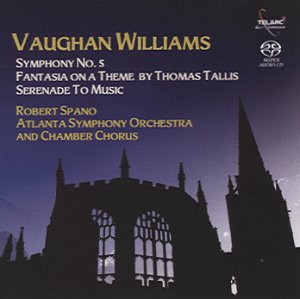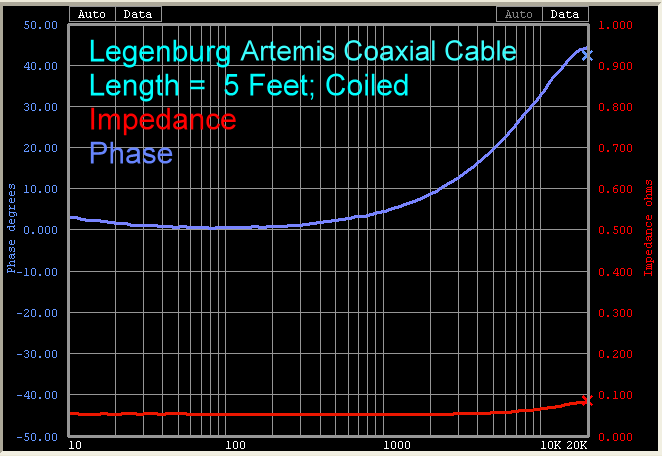|
In this
new (2007) SACD release by Telarc (SACD-60676), we have
orchestra and chorus (separately), perhaps the most complex musical
signals to reproduce.
In the
short "Why Fum'th in Fight", by Thomas Tallis
(1505-1585), there is full chorus, and each voice is
very clear.
With
the "Fantasia on a Theme by Thomas Tallis", composed by
Ralph Vaughan Williams (1872-1958) centuries later, the
chorus is replaced by full orchestra, but again, each
voice - now replaced by stringed instruments from violin
to cello - are still individually distinguishable and
locatable on the soundstage. |
 |
Now, I could go on and on with other albums that
I listened to, touting this and that, but it is not necessary
here. What we look for in cables is that they let the signal
pass from one component to the next, without attenuating the
sound. They are not supposed to have any sound characteristics of
their own. So, what I am saying about these cables is that I
experienced no reduction in the superb quality that I expect to
hear from the BATs, the Lamms, McIntoshes, Magnepans, and Carver
Amazings that I have in my reference systems.
On the Bench
In bench testing interconnects, I have to use
RCA coax to make measurements, since they have two conductors (XLR
has three). So, Legenburg sent a pair of five foot RCA cables
for these tests ($975/pair). Like the XLR, they have incredible build
quality. Here is a close-up photo.

The connector itself is massive. I don't think I
have ever seen one this heavy. Notice also that the cable is the
same diameter as the connector. So, naturally, they are a bit
stiff. I like to use somewhat longer cables when they are thick
like this, as it makes things easier when there is extra length
to bend around the components in the equipment rack.
So, using the coaxial interconnect, I measured
28.6 pico-Farads per foot for capacitance, 0.5 micro-Henries per
foot for inductance, and 14 milli-Ohms per foot for resistance
(capacitance and inductance were measured at 1 kHz, resistance
at 12 Hz).
This is on the low side for capacitance, a bit high on
inductance, and about average for resistance, compared to
previous cables we have tested.
Measuring the impedance and electrical phase
showed that the Artemis interconnect is close to being purely
resistive up to 110 Hz, then becomes increasingly inductive up
to 20 kHz. (Phase values above 0 degrees indicate inductive
reactance, and values below 0 degrees indicate capacitive
reactance.
Here is a nice article that explains impedance and phase
relationships.)
The impedance stays below 0.1 ohm throughout the
audible range. When coiled, the cable becomes more inductive
(expected behavior with a coil),
and the overall impedance stays about the same.


For the speaker cables, capacitance was 35 pico-Farads
per foot, inductance was 0.25 micro-Henries per foot, and
resistance was 6.8 milli-Ohms per foot. The capacitance and
resistance are about average for speaker cables that
we have tested in the past. Not the lowest, but certainly
not nearly as high as some. The inductance is a bit higher than
average, but not the highest.
The impedance measurements showed these cables
to perform essentially resistive in the range of
frequencies up to about 100 Hz, and then to become inductive
above that. The impedance remains well below 1 ohm throughout
the audible range, with the highest value being just below 0.6
ohm at 20 kHz. This impedance value is higher than with the
interconnects because the speaker cables are more than three
times as long.
Notice that the impedance does not change even
when the cables are coiled. I tested this possibility since we
all tend to coil up the extra cable behind the speakers if they
are a bit too long. The Artemis speaker cables have massive shielding, and I
suspect this is part of the reason there is no apparent effect
of the coiling.


Conclusions
I consider the Legenburg Artemis cables to be
dazzling in sound and build. There will be those consumers who
say they are not about to pay thousands of dollars for cables,
but for aficionados, you should give them a listen when you are
in the market. You are likely to be amazed.
- John E. Johnson, Jr. -